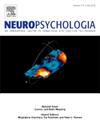序列表示获取中的预测过程。
IF 2
3区 心理学
Q3 BEHAVIORAL SCIENCES
引用次数: 0
摘要
动作-想象-练习描述的是重复的想象,而动作-观察-练习描述的是对一个动作的重复观察。动作-想象-练习和动作-观察-练习都被认为涉及与动作-执行-练习相似的运动机制,从而导致运动学习。为了调查这些练习风格是否在习得的表征类型上有所不同,我们在测试前和测试后比较了相同、镜像和随机序列的练习和转移手的表现。所有参与者在10个练习阶段中对听觉刺激进行一系列的反应时间任务。五个独立的小组,要么是身体上执行反应(动作-执行-练习),要么是想象反应(动作-想象-练习),要么是用一只动手观察按键(动作-观察-练习),要么是观察按键(观察-不行动),要么是完成一个听刺激的控制条件(听觉控制)。在行动-执行-练习和行动-想象-练习后,获得了效应依赖表征的证据,但在行动-观察-练习和观察-不行动后没有得到证据。虽然所有组都获得了部分序列知识,但在动作-执行-练习和动作-想象-练习之后,序列识别与动觉的关系比与音调的关系更强。结论是,即使没有实际的反馈,也可以通过动作-图像-实践获得依赖效果的表征。可以想象,效应依赖学习可能是由预测动作-想象-实践中的动作结果的正向模型引起的,而不是在动作-观察-实践中,动作结果是外部呈现在屏幕上的。本文章由计算机程序翻译,如有差异,请以英文原文为准。
Prediction processes in the acquisition of sequence representations
Action-Imagery-Practice describes the repetitive imagination and Action-Observation-Practice the repetitive observation of an action. Both Action-Imagery-Practice and Action-Observation-Practice are assumed to involve similar motor mechanisms as Action-Execution-Practice, resulting in motor learning. To investigate whether these practice styles differ in the acquired representation types, we compared performance of the practice and transfer hand for same, mirrored, and random sequences in pre- and post-tests. All participants practiced a serial reaction time task to auditory stimuli in ten practice sessions. Five separate groups either physically executed the responses (Action-Execution-Practice), imagined the responses (Action-Imagery-Practice), observed keypresses with an animated hand (Action-Observation-Practice), observed animated keys (Observation-Without-Action), or completed a control condition in which they listened to the stimuli (Auditory-Control). Evidence for effector-dependent representations was obtained after Action-Execution-Practice and Action-Imagery-Practice, but not after Action-Observation-Practice and Observation-Without-Action. Although all groups acquired partial sequence knowledge, sequence recognition was more strongly related to kinesthesis than to the tones alone after Action-Execution-Practice and Action-Imagery-Practice. It is concluded that effector-dependent representations can be acquired via Action-Imagery-Practice even though actual feedback is not available. Conceivably, effector-dependent learning might have been provoked by forward models that predict the action consequences in Action-Imagery-Practice, but not in Action-Observation-Practice, where the action consequences were externally presented on screen.
求助全文
通过发布文献求助,成功后即可免费获取论文全文。
去求助
来源期刊

Neuropsychologia
医学-行为科学
CiteScore
5.10
自引率
3.80%
发文量
228
审稿时长
4 months
期刊介绍:
Neuropsychologia is an international interdisciplinary journal devoted to experimental and theoretical contributions that advance understanding of human cognition and behavior from a neuroscience perspective. The journal will consider for publication studies that link brain function with cognitive processes, including attention and awareness, action and motor control, executive functions and cognitive control, memory, language, and emotion and social cognition.
 求助内容:
求助内容: 应助结果提醒方式:
应助结果提醒方式:


